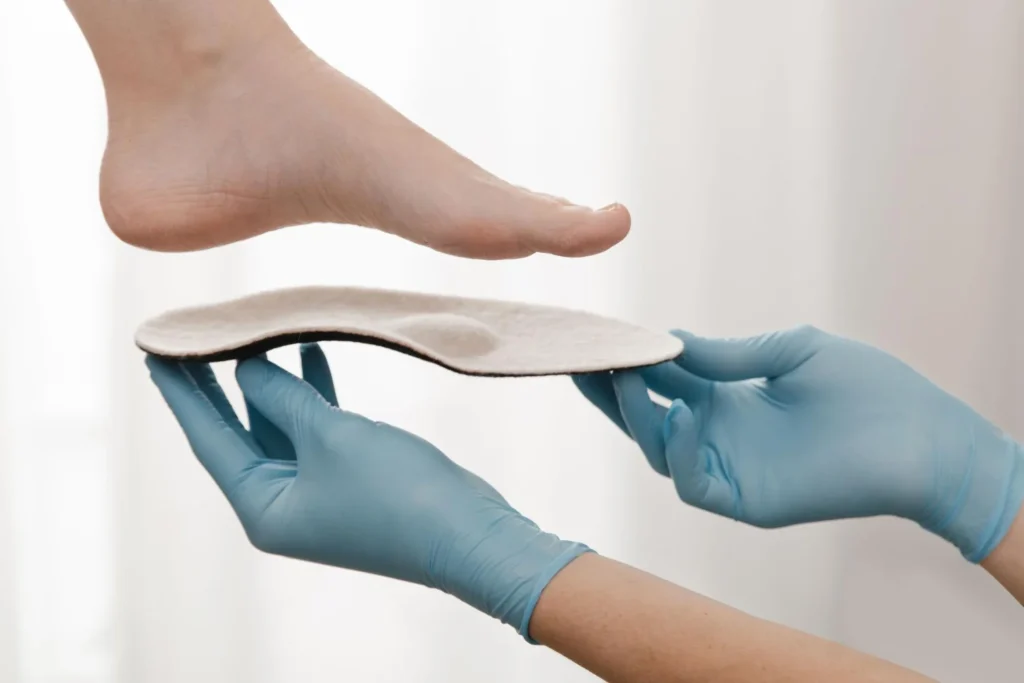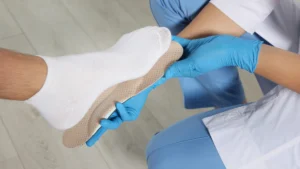It’s crucial to understand the differences between custom orthotics and off-the-shelf insoles as you consider your foot health. Depending on your specific needs, one option may provide significantly better support and comfort than the other. This guide will help you evaluate the benefits and drawbacks of each, ensuring that you make an informed decision about where to invest your money for optimal foot care.
Decoding the Cost: Are Custom Orthotics Worth the Investment?

Investing in custom orthotics often prompts the question of whether they provide significant value compared to off-the-shelf insoles. While the initial cost can be substantially higher, many find that the personalized fit and specific support lead to greater comfort and fewer foot-related issues. This can ultimately save you money on future medical treatments and improve your quality of life, making custom orthotics a worthy investment in the long run.
Price Breakdown: What You’re Really Paying For
A custom orthotics fitting can range from $400 to $800, depending on materials, design complexity, and the level of biomechanical correction required. This cost usually covers a professional gait analysis, precision molding, and follow-up adjustments to ensure long-term comfort and performance.
By comparison, off-the-shelf insoles are typically priced between $30 and $100. While they can offer temporary relief, they lack the personalized alignment, durability, and clinical support that make custom orthotics a true investment in your mobility and overall foot health.
The Role of Insurance: Do Custom Solutions Offer Better Financial Support?
Insurance coverage for custom orthotics varies significantly based on your provider and plan. Many plans cover at least a portion of the costs, particularly if they are deemed medically necessary. By providing detailed documentation from your healthcare professional, you may increase your chances of reimbursement, making custom orthotics a more financially feasible option than you might initially anticipate.
Many insurance plans require a doctor’s prescription for custom orthotics to qualify for coverage, which can offset out-of-pocket expenses significantly. Some policies may cover up to 80% of approved costs, while others might have annual caps. It’s advisable to consult with your insurance provider to understand the specifics of your coverage and determine if your condition justifies the investment, providing a path to alleviate costs tied to foot health solutions. Additionally, pre-authorization may be necessary to ensure that the orthotics are recognized as medically necessary, paving the way for potential reimbursement.
The Science of Comfort: How Custom Orthotics and Off-the-Shelf Insoles Differ

Material Composition and Design: Custom Solutions vs. Ready-Made
Custom orthotics are tailored to your unique foot shape and biomechanics, crafted from high-quality materials that provide optimal support and comfort. In contrast, off-the-shelf insoles typically use generic materials aimed at a broad audience, often compromising on specific support needs. The difference in material density and design complexity can significantly affect how well each option accommodates your foot structure and activities.
Foot Biomechanics: Understanding Your Needs for Optimal Support
Your foot biomechanics dictate how you move and distribute weight, which varies from person to person. Custom orthotics account for your specific gait pattern, arch type, and pressure points, ensuring targeted support that can alleviate pain and improve overall performance. Off-the-shelf options provide a one-size-fits-all solution, often leading to discomfort for those with unique biomechanical needs.
Analyzing your foot biomechanics involves assessing factors such as pronation, supination, and center of pressure during motion. Such insights are critical for creating orthotics that effectively correct misalignments and support natural movements. Additionally, custom orthotics can enhance performance in sports or daily activities by optimizing your foot’s efficiency, offering personalized arch support and cushioning where it is most needed. This individualized approach ultimately leads to better comfort, reduced injury risk, and improved functionality over generic insoles.
User Experiences Unveiled: Personal Stories of Footwear Choices
Real-life experiences can illuminate the stark differences between custom orthotics and off-the-shelf insoles. From athletes to everyday workers, individuals share how their footwear choices have influenced their mobility, daily comfort, and overall quality of life. Many recount journeys of trial and error, discovering what truly supports their feet and alleviates pain.
Testimonials That Showcase the Impact of Custom Orthotics
Many users report life-changing experiences after investing in custom orthotics. For instance, one runner mentioned overcoming chronic shin splints, enabling them to train consistently. Another office worker highlighted reduced back pain and increased energy levels after switching from generic inserts to custom solutions, allowing them to focus more at work and engage in daily activities without discomfort.
The Misconceptions About Off-the-Shelf Options from Real Users
Users often believe off-the-shelf insoles are a one-size-fits-all cure for foot problems. However, many real experiences contradict this notion. A hiker shared that despite the affordability of over-the-counter inserts, they felt inadequate support during long treks. Another participant admitted frequent purchases of various insoles, ultimately realizing that a custom approach was more economical in the long run.
Purchasing off-the-shelf options often leads to a revolving door of trial and error. Many users initially assume that these insoles will provide enough support without fully addressing their unique foot structure. Over time, continuous discomfort and the need to buy multiple products can actually result in greater overall costs. By sharing these stories, it’s evident that while off-the-shelf insoles offer convenience, they may lack the tailored support that specific conditions require, leading to ongoing challenges rather than solutions.
Expert Opinions: What Podiatrists Recommend for Foot Health
According to podiatrists, there’s no one-size-fits-all answer when it comes to foot health. Most experts agree that custom orthotics are the gold standard for addressing chronic pain, biomechanical imbalances, or conditions such as plantar fasciitis and diabetic foot complications. These devices are crafted to match your exact foot structure and gait, helping restore alignment and reduce long-term strain.
That said, off-the-shelf insoles can still play a role — especially for people seeking short-term relief, mild cushioning, or budget-friendly support. The key difference lies in precision: custom orthotics treat the cause, while off-the-shelf insoles mostly manage the symptoms.
When to Choose Custom Orthotics: Medical Recommendations
Choose custom orthotics when dealing with persistent foot pain, foot deformities, or conditions that require precise support. Podiatrists often recommend them for patients with specific diagnoses, ensuring the orthotics align with your unique foot structure, improving mobility and comfort significantly.
Evaluating Off-the-Shelf Options: What Professionals Say
Many podiatrists acknowledge that off-the-shelf options can be effective for mild discomfort or preventive care. They recommend assessing your arch type, activity levels, and shoe fit when selecting these products. Quality brands often feature cushioning and support features beneficial for casual wearers, though they may lack the personalized fit of custom models.
Professionals emphasize that while off-the-shelf insoles can offer immediate relief for everyday activities, they may not provide the necessary support for serious conditions. An example includes foam insoles designed for arch support, which can help reduce fatigue during long periods of standing. Experts often advise trialing a few different brands to find the right level of support before considering the investment in custom orthotics, particularly for active individuals or those experiencing sporadic pain.
Practical Considerations: Making the Right Choice for Your Feet
Choosing between custom orthotics and off-the-shelf insoles involves evaluating your specific needs. Consider factors like your foot structure, daily activities, and any underlying conditions. While custom orthotics may offer personalized support, off-the-shelf products might provide adequate relief for minor issues. Think about how often you plan to use them and whether convenience or specialized support is your priority. Your lifestyle will ultimately dictate the best option for your feet.
Assessing Your Foot Condition: Self-Assessment and When to Seek Help
Begin your evaluation by observing any discomfort or pain in your feet, which may signal the need for a more tailored approach. Examine your arch type, gait, and any recurring issues like plantar fasciitis or bunions. If you notice persistent pain despite using off-the-shelf products or if your condition worsens, consulting a podiatrist is advisable. Professional assessment ensures you receive the right solution for your foot health before making a financial commitment.
Cost-Benefit Analysis: Longevity vs. Immediate Relief
Balancing the cost of custom orthotics against off-the-shelf alternatives requires a close look at longevity and immediate relief. Custom orthotics, typically ranging from $399 to $800, often last several years, while off-the-shelf insoles, priced between $30 and $100, may need regular replacement. Consider your budget; investing in custom options might enhance comfort over time, while off-the-shelf solutions can provide quick, temporary relief for minor ailments.
In assessing longevity vs. immediate relief, weigh the long-term benefits of custom orthotics against the lower upfront costs of off-the-shelf insoles. For example, if you frequently experience foot pain that hampers your daily activities or athletic pursuits, custom orthotics might be a more strategic investment, reducing discomfort and improving performance. On the other hand, if your foot issues are infrequent, off-the-shelf options may suffice for occasional relief without committing to a higher price tag. Consider how often you need reliable support, as this will guide you to choose the best value for your circumstances.
Custom Orthotics vs Off-the-Shelf Insoles: Final Thoughts

Choosing between custom orthotics and off-the-shelf insoles ultimately comes down to your unique needs. If you’re dealing with foot pain, alignment issues, or chronic discomfort, a professional custom orthotics fitting at Custom Orthopedic & The Walk Shoppe can make all the difference. Our specialists use detailed gait analysis and precision measurements to design orthotics that enhance comfort, balance, and performance.
For general support or mild fatigue, off-the-shelf insoles may offer short-term relief — but for lasting results and true personalization, custom orthotics remain the gold standard.
Visit Custom Orthopedic & The Walk Shoppe in Edmonton or call (780) 426-3338 to schedule your custom orthotics fitting today.





